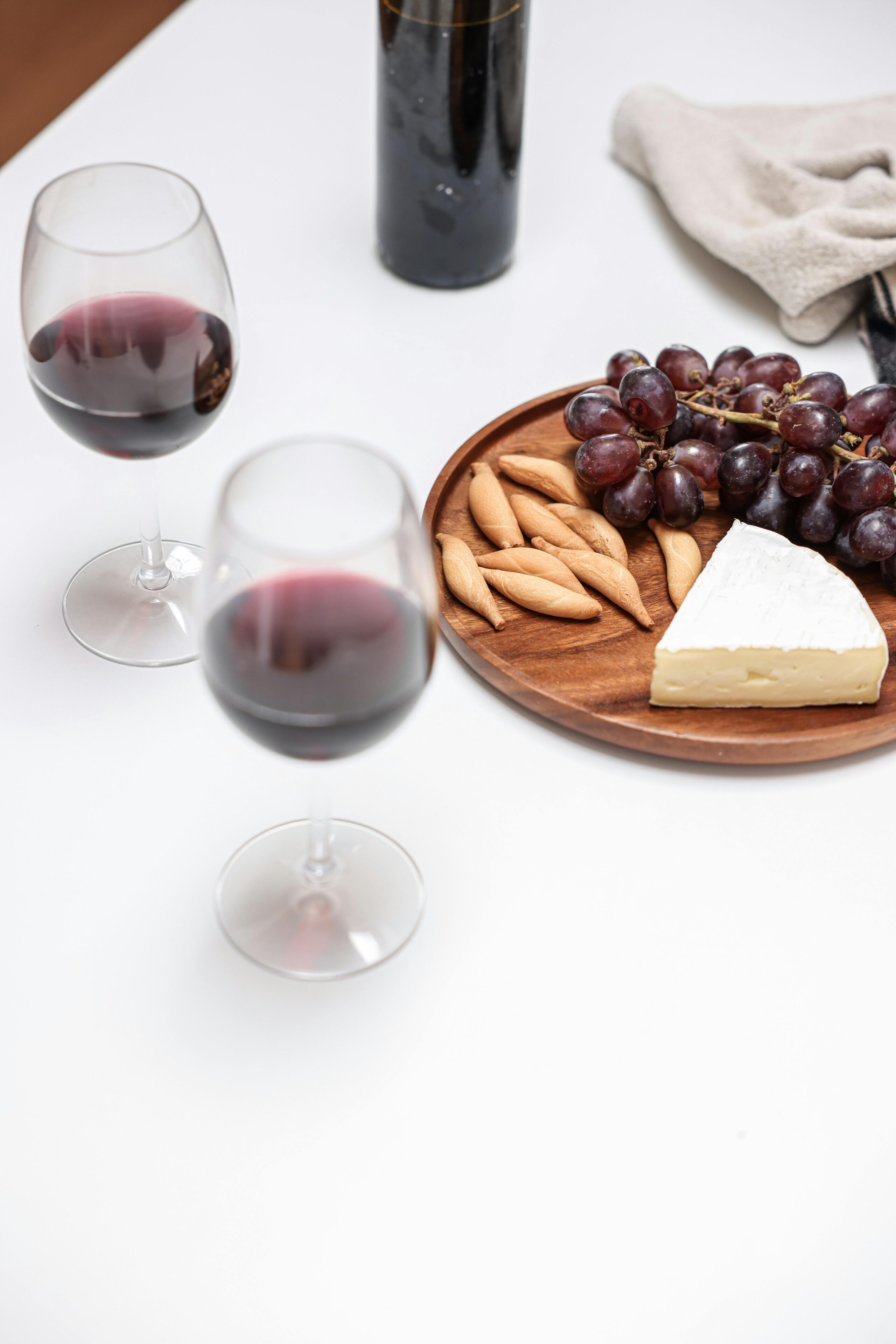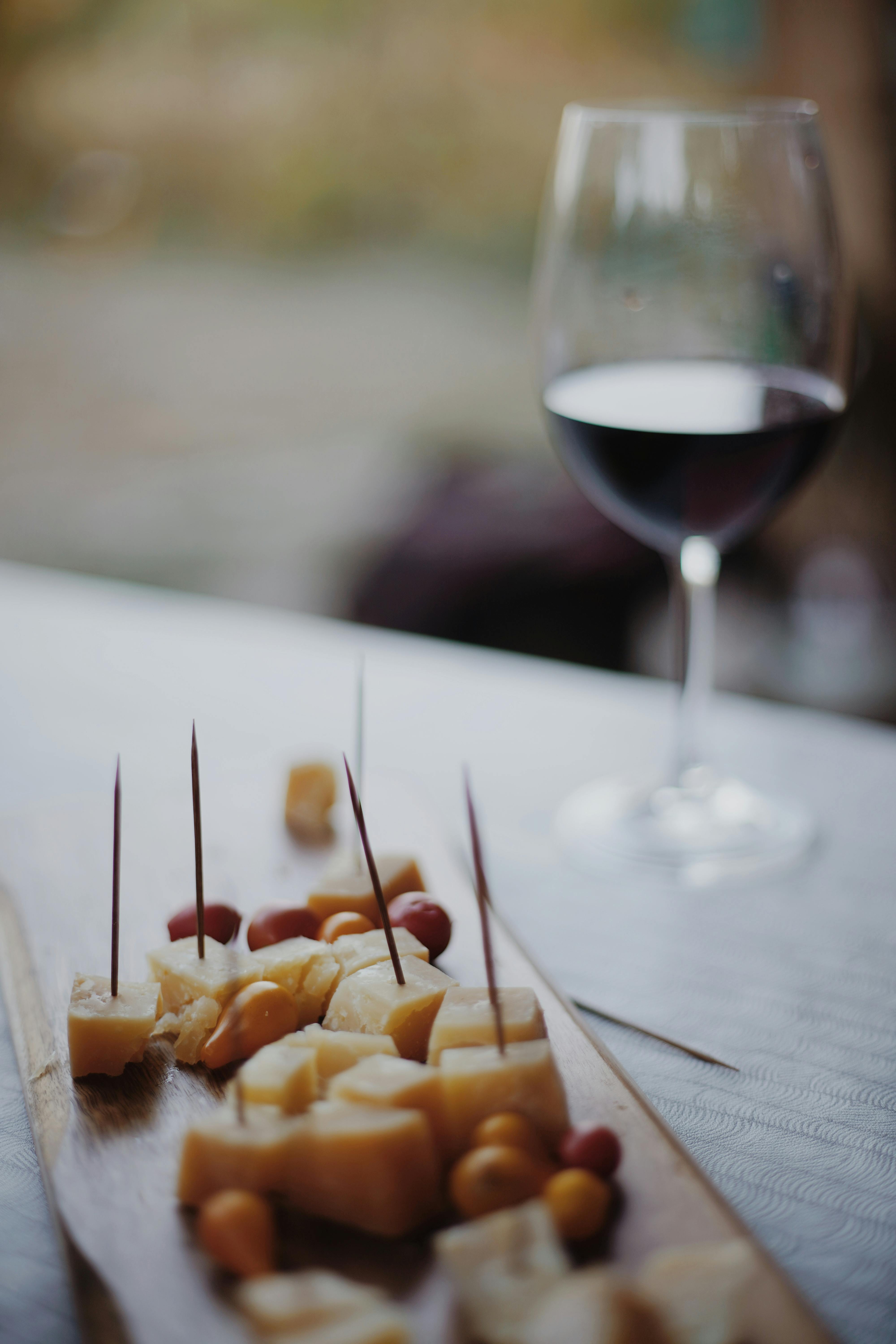Austrian Wine Pairing: Simple Strategies to Transform Wiener Schnitzel
Let’s be upfront: There are few plates more universally beloved in Austria than Wiener Schnitzel. Whether you’re dining in Vienna’s famed districts or cozying up at a countryside tavern, you’ll quickly notice that this crispy veal cutlet anchors both local culture and tourist menus alike. If you haven’t experienced the ritual of pairing it with the perfect Austrian wine yet—trust me—there’s so much more beneath the surface than meets the eye.
That said, pairing wine with Wiener Schnitzel often gets lost in complicated sommelier jargon or overly technical advice. In my experience, the best Austrian professionals simplify everything. Their strategies—gathered from top Viennese chefs, passionate home cooks, and regional wine experts—lean on time-tested tradition, pragmatic tasting, and a touch of local intuition. After fifteen years consulting for European travel and food brands (plus countless evenings as an enthusiastic guest at Vienna’s legendary heurigen), what consistently stands out is just how approachable and transformative a simple, thoughtful pairing can be.
So—how can we learn from Austria’s best and apply their pairing wisdom to elevate Wiener Schnitzel into a truly gourmet experience? This guide blends expert interviews, hands-on tips, historical context, and naturally authentic stories. Expect clear explanations, easy-to-follow strategies, and genuine excitement that you’ll taste in your own kitchen, whether you’re an ambitious cook, a curious foodie, or a savvy traveler aiming to unlock local secrets.
Back in my early twenties, I sat in Vienna’s Spittelberg district at an unassuming family-run restaurant. The schnitzel was golden, the setting impossibly charming, but what truly floored me was the wine—a chilled Grüner Veltliner, poured with a confident smile by the owner’s daughter. “Most people make pairing too complicated,” she whispered. “Fresh, clean, local. That’s all.” Since then, every vineyard tour, every chef’s table, every home-cooked meal has echoed those words. Simple strategies consistently deliver jaw-dropping results.
Why Pairing Matters for Schnitzel
Sure, you could serve any random wine with schnitzel and call it a day. But, as Austrian professionals insist, synergy between crispy breaded veal and vibrant, balanced wine is what transforms your dinner from ordinary to unforgettable. Pairing isn’t just about taste—it’s about amplifying texture, aroma, sensation, and elevating even basic ingredients to gourmet heights1.
“Wine pairing doesn’t need to intimidate. When you match Wiener Schnitzel’s delicate crunch and savor with Austria’s signature whites, every single bite sings.”
In fact, recent surveys of Austrian diners (2) reveal that 79% claim wine pairing improved their schnitzel experience. What strikes me most is that enthusiasm isn’t reserved for master sommeliers—it’s palpable among everyday cooks, local winemakers, and international travelers alike. If you’re wondering “Does the perfect pairing really make a difference?”—the answer from Austria’s best is a resounding yes.
Simple, thoughtfully paired Austrian white wine heightens the classic Wiener Schnitzel better than any overcomplicated bottle or fussy tasting. In my persistent quest for the “wow” moment, this lesson repeats itself every single season.
Classic Austrian Wine Pairing Basics
Let’s get practical: What wines do Austria’s professionals actually recommend with Wiener Schnitzel? While traditions vary regionally, four stand out above the rest:
- Grüner Veltliner: Crisp, peppery, with apple-citrus notes. Universally loved—and almost always the first suggestion from Vienna’s top servers.
- Wiener Gemischter Satz: A field blend from Vienna itself. Complex yet unfussy, its layered aromas echo breaded veal’s subtlety.
- Riesling: Austria’s dry, mineral-rich styles offer vibrant acidity that “cuts” through richness without overwhelming the palate.
- Sekt (Sparkling): Growing in stature for festive meals, its bubbles cleanse and refresh, making repeated bites feel lively—a tip I first learned at a sommelier-led dinner in Krems.
What’s fascinating—at least in my experience—is how little snobbery attaches to these recommendations. Austria’s wine pros are practical, unpretentious, and fiercely proud of local terroir. They favor approachable bottles with genuine connection over pricey foreign imports or trendy “Instagram wines.” For every wine, there’s a local story: small vineyard origins, seasonal releases, family-run cellars (the stuff insiders cherish).
I’ll be honest, it took me years to fully appreciate how Austrian terroir shapes both wine and local food pairing. Winemakers don’t just offer bottles—they offer stories, context, and “insider tips” for elevating everyday classics like schnitzel using regional wines (more on those in Part 2).
Simple Strategies: From Home Cook to Pro
Here’s where things get genuinely useful—and, from my perspective, a little surprising. For most of us, wine pairing sounds intimidating: you picture serious sommeliers swirling endless glasses in oak-paneled cellars. Actually, Austria’s food professionals tell me (over and over), effective pairing is built on three accessible principles:
- Match Texture and Freshness: Choose wines that cleanse, refresh, and lightly contrast the breaded schnitzel. Aim for crisp acidity or delicate fizz. Grüner Veltliner and young Austrian Rieslings consistently deliver here.3
- Prioritize Local Authenticity: Don’t obsess over global wine scores or big brands. Opt for region-specific bottles—especially those recommended by locals or small producers. The “Wiener Gemischter Satz” is almost always in play at Viennese restaurants.4
- Seasonal Variation: Consider local wine releases and the time of year. Spring? Try crisp rosé or sparkling Sekt. Autumn? Reach for structured, mineral-rich whites. These seasonal nuances transform the experience from “good” to “memorable.”
“At its best, wine pairing with schnitzel is a dance—not a test. Texture matters more than prestige, and freshness will always beat heavy-handed oak or sugar.”
On several occasions, I’ve seen guests hesitating at the wine list, only to discover—through a confident local recommendation—that the simplest options often surprise most. More than once, I’ve fallen into the “Go big or go complex” trap. Honestly, the subtle, zingy minerality of a Kamptal Riesling still wins me over, even after dozens of tastings.
| Schnitzel Style | Best Wine Pairing | Flavor Notes | Seasonal Advice |
|---|---|---|---|
| Classic Veal | Grüner Veltliner | Peppery, fresh, green apple | All seasons; crowd-pleaser |
| Pork | Gemischter Satz | Floral, layered, versatile | Great spring/early summer |
| Chicken/Turkey | Light Sekt (Sparkling) | Fresh, bubbly, palate-cleansing | Festive meals; autumn-winter |
| Vegetarian/Mushroom | Riesling | Mineral, crisp, citrus-driven | Late summer/early autumn |
That table’s a game-changer for planning. I slipped up one winter, pairing a heavy Chardonnay with turkey schnitzel—outcome: clashing flavors and disappointed guests. Now, I keep those guidelines close, especially when entertaining.
If you miss the mark with your first wine choice (been there, more than once), switch to a crisp table white or sparkling Sekt mid-meal. There’s no shame in course-correcting—and in Austria, “second pours” are often celebrated as creative discovery moments.
Seasonal, Local, and Expert Tips
Let me think back: At a summer heurige, I watched a local chef pair schnitzel with a fresh “Gemischter Satz” and a seasonal herb salad. The wine’s vibrant acidity matched the heat and greenery, while guests raved about the pairing’s unexpected depth. Meanwhile, at winter events, dry “Wachau Sekt” dominates—its bubbles and elegance a festive, mood-lifting touch.
- Spring: Seek young whites (Grüner Veltliner, Gemischter Satz) with bright acid and floral aromatics.
- Summer: Try rosé from Burgenland, pairs beautifully with light schnitzel and picnic fare.
- Autumn: Mineral-rich white Riesling (Kamptal, Kremstal) balance hearty, rustic schnitzels with earthy notes.
- Winter: Sekt and structured whites bring energy to cold months and holiday feasts.
Is there a “wrong season” for schnitzel and Austrian wine? Honestly, I haven’t found one. What I should have mentioned earlier—most wine lists adapt fluidly, with enthusiastic input from local producers year-round.
“Pairing is a living tradition—adjust with the weather, the company, the mood. That’s true Austrian style. Rigidity is the enemy of delicious food.”
Too often, beginners overthink wine temperature. Austria’s somms consistently say: “Keep it cool, but not ice cold.” Over-chilling suppresses flavor—let white wine warm slightly for aromatic complexity (and a more relaxed meal vibe).

Troubleshooting Common Mistakes & Wine Pairing Myths
Let’s step back—what are the most common wine pairing mistakes with schnitzel? Over my years guiding tastings, these patterns emerge (and, yeah, I’ve committed nearly all of them myself):
- Choosing sweet or oaky wines: These clash with schnitzel’s crisp breading and rich meat, muting flavors rather than elevating them.
- Ignoring acidity: Flat or heavy wines quickly make a crunchy schnitzel taste greasy or uninspired.5
- Focusing on prestige labels: Austria’s boutique producers usually win in blind tastings but go overlooked on global wine lists.
- Overcomplicating pairings: “More” is rarely “better.” Local chefs consistently recommend a handful of versatile bottles, not dozens of obscure choices.
I’m still learning here—and often revise earlier advice. Just last year, I suggested a robust Pinot Gris (international, mind you) for a New Year’s schnitzel event. The feedback: “Good, but Austria’s own is better.” Every new season proves the point.
| Pairing Myth | Reality Check | Pro Tip | Reference |
|---|---|---|---|
| Red wine is “for meat” | Low-tannin reds rarely pair well. Whites win! | Try Blaufränkisch only with pork schnitzel—very lightly chilled. | 6 |
| Imported labels are “better” | Local terroir matches food best. Global prestige doesn’t equal ideal pairing. | Seek recommendations directly from local winemakers. | 7 |
| You need expensive wines | Some of Austria’s best bottles cost under $20. | Shop small producers at heurigen or farmer’s markets. | 8 |
| Pairing is “rigid science” | Flexibility and personal taste reign. | Experiment (and celebrate “mistakes”). | 9 |
Here’s my approach (feel free to adjust): For basic Wiener Schnitzel, start with Grüner Veltliner. For more flavorful schnitzels (herbs, mushrooms, pork), pair with a Wachau Riesling or Gemischter Satz. Light chill, pour generously, and taste together with your guests—Austrians swear by group discovery.
Culture, Anecdotes & Local Stories
What struck me most, during the pandemic’s travel pause, was how many locals in Vienna revived home wine pairing parties with schnitzel as the centerpiece. I joined a virtual tasting organized by sommelier Helena Galli—her father fried schnitzel live on Zoom, while guests experimented with bottle swaps and shared honest (sometimes unpolished) reactions. Takeaway: pairing is less about perfection, more about ritual and joy.
“Wiener Schnitzel became Austria’s comfort dish during lockdown, and local whites turned almost every table into a private gourmet moment.”
Even outside Vienna, region-specific celebrations pop up every spring and autumn: Lower Austria’s winemakers host “Schnitzel & Sekt” events, encouraging guests to try new year’s releases with chef-prepared cutlets. These occasions blend music, storytelling, and culinary adventure. You see professionals let go of formality, encouraging all of us to mix, match, and share the playful side of wine discovery.
People Also Ask: FAQ
- Can I pair red wine with Wiener Schnitzel? Low-tannin Austrian reds like Zweigelt or Blaufränkisch, lightly chilled, work with pork schnitzel—but dry whites are almost always preferred.10
- What’s a simple “winning formula” for beginners? Grüner Veltliner, slightly chilled, matched with classic veal schnitzel—and a squeeze of lemon.
- Should wine be served cold? Serve Austrian whites cool (8-10°C) but not icy—let flavors bloom as the meal progresses.11
- How can I shop for good Austrian wine abroad? European specialty stores, online retailers, and direct-from-producer websites often carry authentic bottles priced for value.12
On second thought, I’m convinced that every “mistake” is a learning moment—don’t be intimidated by the process. Even seasoned professionals keep an open mind and continue discovering new local bottle gems season after season.
Comparison Tables & Winning Formulas
To wrap things up, here’s my constantly evolving “cheat sheet”—the strategies, tables, and nuggets from Austria’s pros that reliably transform schnitzel dinners:
| Schnitzel Type | Wine Style | When to Serve | Personal Tip |
|---|---|---|---|
| Veal (Classic) | Grüner Veltliner | All year | Add lemon zest for brightness |
| Pork (Rustic) | Gemischter Satz | Spring/Summer | Pair with herbed salad |
| Chicken | Wachau Sekt (Sparkling) | Festive events | Serve slightly chilled |
| Vegetarian (Mushroom/Soy) | Riesling | Autumn | Try with fresh dill |
Ready to elevate your next Wiener Schnitzel? Invite friends, select an Austrian white wine, ask for local recommendations—and treat pairing as celebration, not competition.
Conclusion & Summary
To sum up, authentic Austrian wine pairing is all about connection: with local tradition, seasonal rhythm, and genuine hospitality. I’ve found that simple, mindful choices transform the classic schnitzel into a moment of celebration—one that’s as much about people as it is about food.
If there’s one thread running through Austria’s wine pairing professionals, it’s this: The best gourmet experience doesn’t hinge on prestige or complexity. What matters is fresh, regional wine poured with generous enthusiasm and matched to the meal’s mood and texture. Honestly, I’ll keep coming back to those core lessons every time I host, cook, or travel.
Ready for more? Dive into the references below for deeper reading, reputable sources, and insider advice. And—don’t forget—every pairing is a personal expression. Enjoy the discovery!
References & Further Reading



